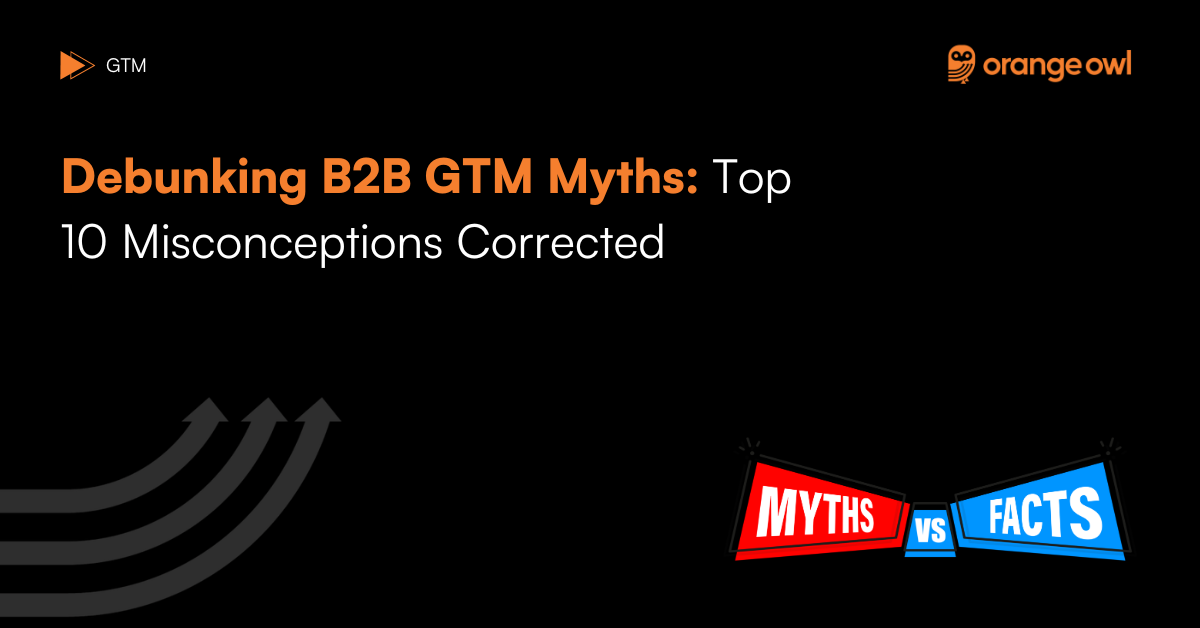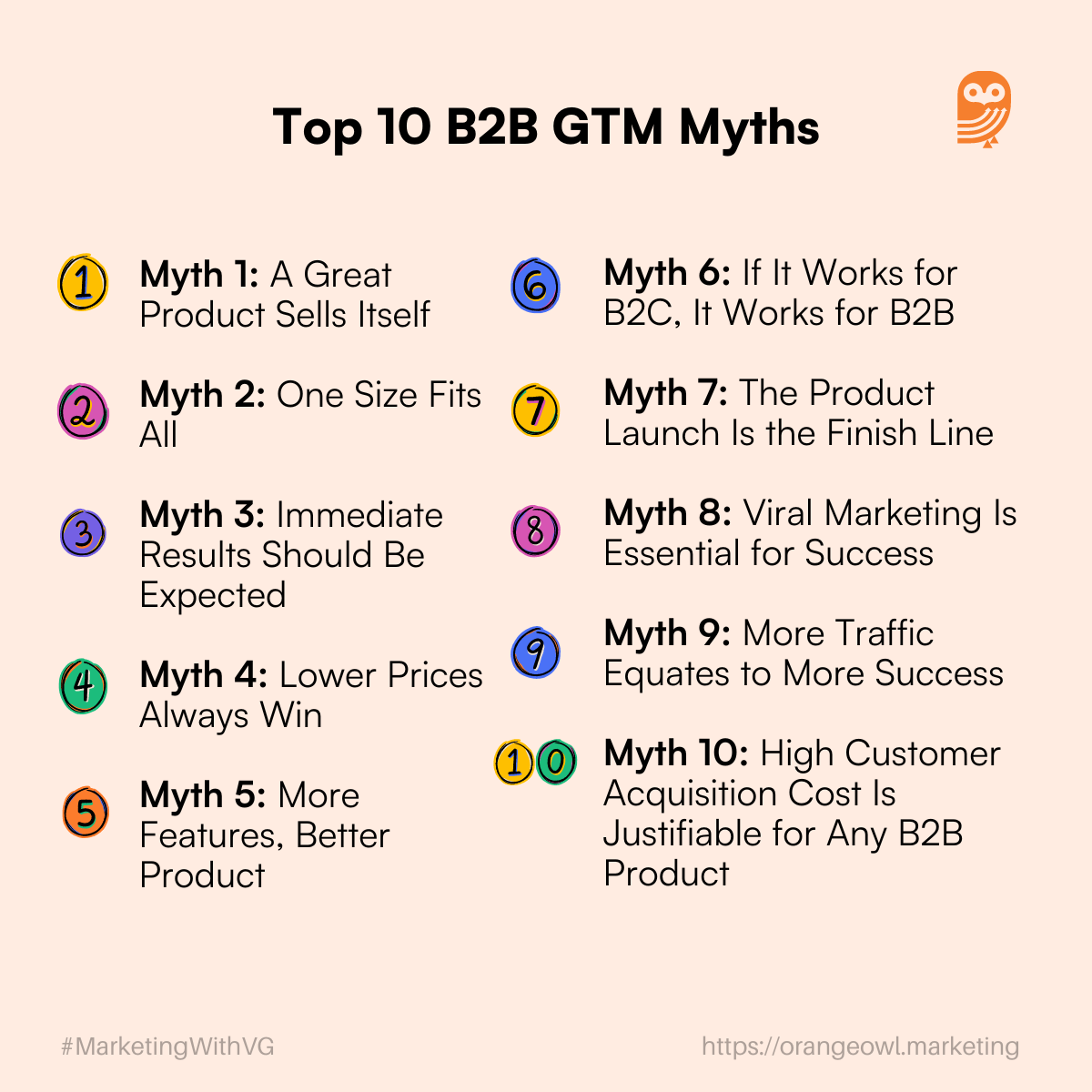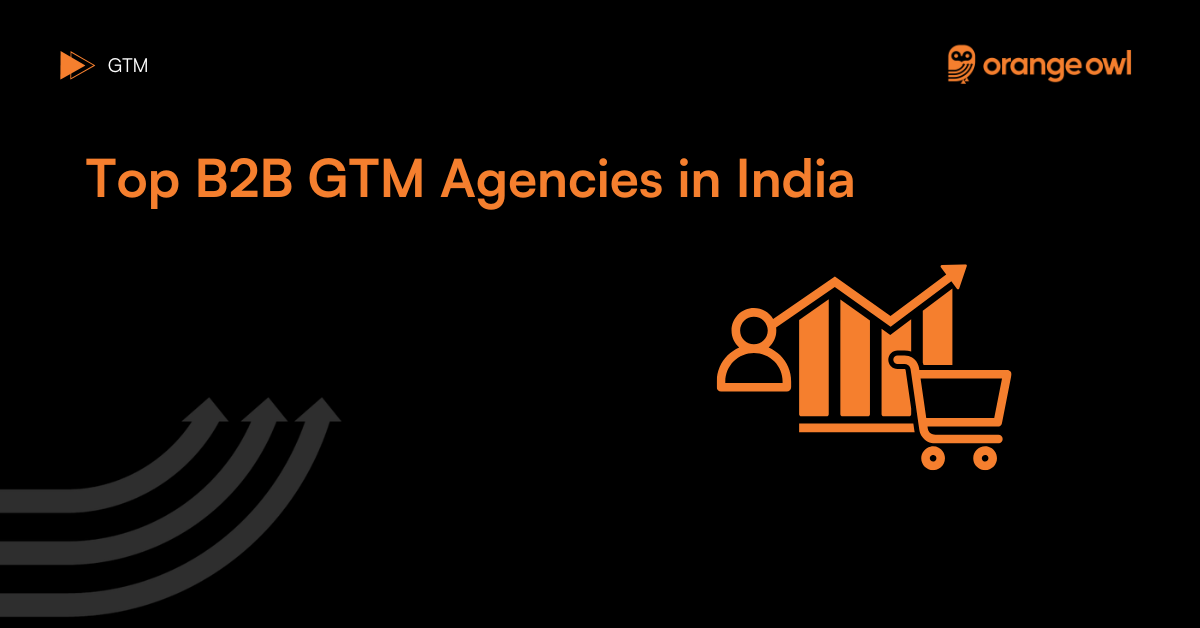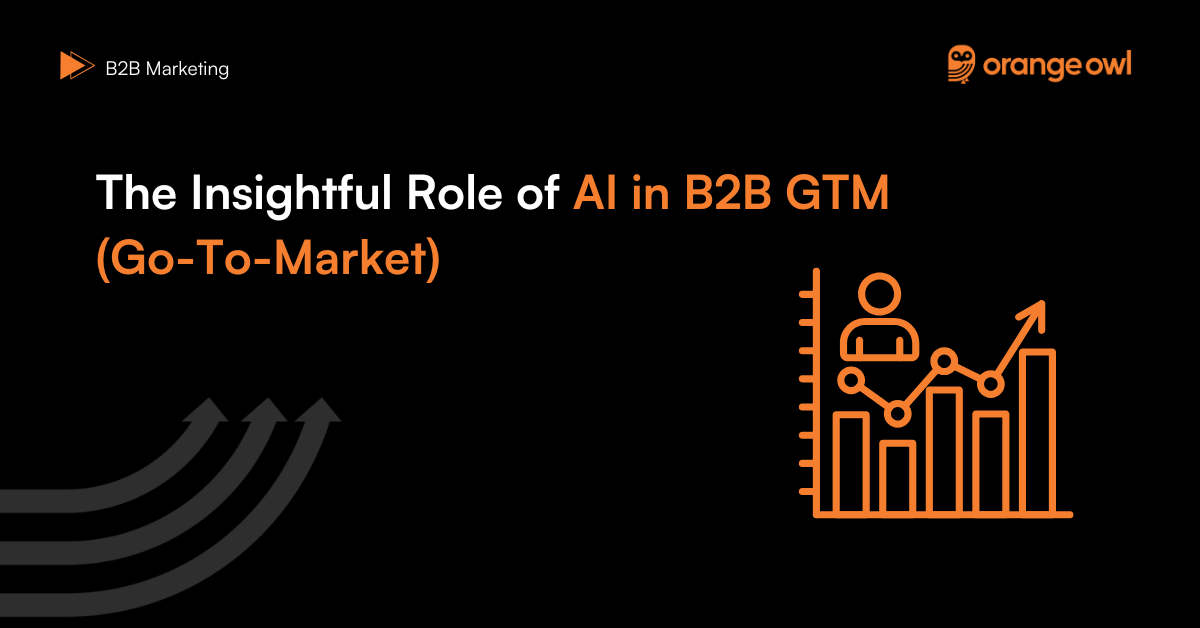Debunking B2B GTM Myths: Top 10 Misconceptions Corrected
Vivek Goel
February 1, 2025

Table of Contents
Creating a Go-To-Market (GTM) strategy is a critical step for businesses looking to introduce new products into the B2B space. However, there are several pervasive myths that can mislead and potentially derail the success of these strategies.
In this blog, we’ll explore these common myths, provide real-world examples to debunk them, and offer expert tips to guide you toward a more effective GTM approach.
Top 10 B2B GTM Myths
Myth 1: A Great Product Sells Itself
Misconception: Many believe that if a product is good enough, it doesn’t need much marketing or strategic planning to succeed.
Reality: Even the best products require a well-thought-out GTM strategy to reach the right audience and achieve market success.
B2B Example: A company developed an advanced data analytics platform but struggled with sales because they believed the product’s capabilities would speak for themselves. Without adequate market education and targeted marketing, potential customers were unaware of the product’s full benefits.
Expert Tip: Invest in strategic marketing that educates your target market about the unique benefits and uses of your product. Focus on creating detailed use-case scenarios and value-driven content.
Myth 2: One Size Fits All
Misconception: A single GTM strategy can be applied universally across different products and markets.
Reality: Effective GTM strategies must be tailored to the specific needs, behaviors, and preferences of each target market segment.
B2B Example: A SaaS provider initially used the same GTM strategy for both their CRM and marketing automation tools. However, they soon realized that each product catered to distinctly different customer types and required unique positioning and sales approaches.
Expert Tip: Conduct segment-specific research to understand the nuances of each target market. Customize your messaging, channels, and sales tactics to align with the specific expectations and requirements of each segment.
Myth 3: Immediate Results Should Be Expected
Misconception: Once a GTM strategy is implemented, immediate results in terms of sales and market penetration are expected.
Reality: Successful GTM strategies often require time to mature, with gradual improvements in market response and sales.
B2B Example: An enterprise software company expected rapid adoption of their new platform but didn’t see significant traction until several months post-launch, after multiple feedback cycles and adjustments.
Expert Tip: Set realistic expectations and timelines for your GTM outcomes. Focus on long-term goals and continuously optimize your strategy based on market feedback and performance metrics.
Myth 4: Lower Prices Always Win
Misconception: Competing on price is the most effective way to gain a foothold in the market.
Reality: Competing solely on price can undervalue your product and erode profit margins. Value-based positioning often leads to more sustainable business growth.
B2B Example: A B2B equipment manufacturer initially focused on undercutting competitors’ prices but struggled with low profit margins. Shifting to a value-based pricing strategy that highlighted their superior customer service and product durability led to increased profits and customer loyalty.
Expert Tip: Develop a pricing strategy that reflects the value of your solution. Educate your customers on why your product is worth the premium price in terms of ROI, durability, support, and innovation.
Myth 5: More Features, Better Product
Misconception: Adding more features to a product always makes it more attractive to buyers.
Reality: Overloading a product with unnecessary features can confuse potential buyers and dilute the core value proposition.
B2B Example: A project management tool added numerous complex features in an attempt to appeal to a broader audience. However, the tool became overly complicated, and core customers started to look for simpler alternatives.

Expert Tip: Focus on the features most valued by your target customers. Conduct regular customer feedback sessions to determine which features are actually being used and appreciated.
Myth 6: If It Works for B2C, It Works for B2B
Misconception: Marketing strategies that are successful in consumer markets can be directly applied to business markets.
Reality: B2B buying processes are fundamentally different from B2C and typically involve longer sales cycles, multiple stakeholders, and higher complexity.
B2B Example: A company tried using a popular B2C influencer marketing strategy in a B2B context, only to find that decision-makers in businesses were more influenced by industry experts and peer recommendations.
Expert Tip: Understand the specific decision-making processes and criteria in B2B environments. Leverage industry experts, case studies, white papers, and professional endorsements to build credibility.
Myth 7: The Product Launch Is the Finish Line
Misconception: Once a product is launched, the majority of the work is done.
Reality: The launch is just the beginning; ongoing efforts are required to maintain momentum, gather feedback, and iterate on the product.
B2B Example: After a successful initial launch, a tech startup neglected post-launch activities like customer support and continuous improvement, leading to a gradual decline in user engagement and satisfaction.
Expert Tip: Plan for post-launch activities, including customer support, product updates, and community building. Continuously engage with your customers and use their feedback to improve your product and GTM strategies.
Myth 8: Viral Marketing Is Essential for Success
Misconception: Achieving viral growth is a necessary component of a successful GTM strategy.
Reality: While viral marketing can be impactful, it is rare and unpredictable. Consistent and steady growth through targeted marketing efforts is often more achievable and sustainable.
B2B Example: A B2B software company focused on attempting to create viral marketing campaigns but failed to achieve significant traction. A shift towards targeted content marketing and SEO strategies resulted in a steady increase in qualified leads.
Expert Tip: Focus on building solid marketing foundations—such as SEO, content marketing, and lead nurturing—that deliver consistent results over time.
Myth 9: More Traffic Equates to More Success
Misconception: Increasing website traffic is the ultimate indicator of a successful GTM strategy.
Reality: Not all traffic is equal. Quality and relevance of traffic are more important than volume, especially in B2B markets where targeted leads are crucial.
B2B Example: A cloud storage provider initially focused on driving high traffic volumes through broad digital advertising campaigns. However, they soon realized that most visitors were not their target business clients. Refocusing on targeted content and SEO strategies aimed at IT professionals and business owners led to higher quality leads and better conversion rates.
Expert Tip: Focus on attracting the right audience, not just a larger audience. Use targeted marketing strategies like SEO, PPC campaigns with specific keywords, and content marketing tailored to the needs of your ideal customer profile.
Myth 10: High Customer Acquisition Cost Is Justifiable for Any B2B Product
Misconception: Because B2B products often have higher price points, it’s acceptable to have a high customer acquisition cost (CAC).
Reality: While B2B products can justify a higher CAC due to their potential lifetime value, it’s crucial to balance acquisition costs with customer retention and lifetime value to ensure sustainable profitability.
B2B Example: An enterprise software company justified a high CAC by emphasizing the high potential returns from each customer. However, without a strong focus on customer retention and satisfaction, churn rates increased, undermining long-term revenue and profitability.
Expert Tip: Continuously monitor and optimize your CAC in relation to customer lifetime value (CLV). Implement strategies to increase customer retention, such as regular follow-ups, ongoing support, and loyalty programs to maximize the profitability of each customer.
Takeaway
By understanding and addressing these common myths, B2B companies can develop more effective and realistic GTM strategies tailored to their unique market conditions and customer needs.



